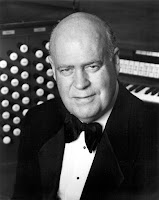Vocal Music
- People, Look East – arr. Malcolm Archer (b. 1952)
Instrumental Music
- “Sleepers, wake!” A voice astounds us – Johann Sebastian Bach (1685-1750)
- O Come, O Come, Emmanuel – Larry Dalton (1946-2009)
- “Sleepers, wake!” A voice astounds us – Johann Ludwig Krebs (1713-1780)
Congregational Music (all hymns from The Hymnal 1982 with the exception of those marked “R” which are from Renew.)
- Hymn 57 - Lo! he comes with clouds descending (HELMSLEY)
- Hymn 73 - The King shall come when morning comes (ST. STEPHEN)
- Hymn 59 – Hark! A thrilling voice is sounding (MERTON)
- Hymn R 152 - I want to walk as a child of the light (HOUSTON)
- Hymn 68 - Rejoice! rejoice, believers (LLANGLOFFAN)
- Psalm 122 – Tone 1f
People, Look East
"People, Look East" first appeared in The Oxford Book of Carols (1928). The text was written by the same poet who wrote the popular hymn "Morning has broken," Eleanor Farjeon (1881-1965). In England, she is beloved as the author of more than eighty children's books and poem collections, most notably Elsie Piddock Skips in Her Sleep, Martin Pippin in the Apple Orchard, and The Little Bookroom.
Key images of the season are abundant. "People, Look East" is the direction of the rising sun and, in the history of Christianity, the direction of the coming Messiah. In stanza two, the bare earth is waiting for the seed that will flourish in the reign of the Promised One. In stanza three, the stars that guided the Magi shape the "bowl" of the heavens, giving signs of hope beyond "the frosty weather." The angels' song, in stanza four, sets "every peak and valley humming," an oblique reference to Isaiah 40:4, "Every valley shall be exalted and every mountain and hill brought low. . ."
Except for one word that changes in the last two lines of each stanza, the poem and its musical setting give the sense of a refrain. "Love," in turn, is defined as "Guest," "Rose," "Star," and "Lord."
The lively tune, a traditional French carol BESANÇON, which earlier appeared with the anonymous text, "Shepherds, shake off your drowsy sleep," provides a festive setting for this wonderful Advent text. In the last forty years, this hymn has gained increasing popularity, as evidenced by its appearance in a number of hymnals in the United States.
Sleepers, Wake!
The Gospel lesson from Matthew 24 warns us
Keep awake therefore, for you do not know on what day your Lord is coming.(verse 42
I therefore had to choose the old Advent standby, “Sleepers, wake!” A voice astounds us, for the organ voluntaries this Sunday. The opening voluntary is an arrangement of a movement from a Bach cantata (No. 140) arranged by J. S. Bach himself. The keystone of the work, in the middle of the cantata, it is a chorale for tenor. This, along with Sheep may Safely Graze and Jesu Joy of Man’s Desiring must surely rank among the best known and most popular of Bach’s individual cantata movements.
The chorale melody is played with a minimum of embellishment on a trumpet sound while the principal, or basic organ sound, declaims the obbligato melody. One of the wonders of this movement is the manner in which the chorale and obbligato melodies appear to have virtually no connection with each other, and yet fit together perfectly. Julian Mincham, in his writings on Bach’s Cantatas (JSBachCantatas.com), says
It is possible that Bach saw this as a symbol of the earthly and the spiritual, seemingly apart, dissimilar and diverse and yet, by reason of the Ordained Natural Order, ultimately fitting together and perfectly complementing each other. Thus we might consider the chorale as representing matters spiritual and the foursquare, almost stolid string melody as earthly life and environment. Each may be depicted perfectly well independently but the fundamental message is that they have been conceived, by the Almighty, as the two parts of the same reality.
The closing voluntary is by a cousin and pupil of Bach, Johann Ludwig Krebs. His organ music is composed in the forms used by Bach and leans heavily on Bach’s style. It is technically very accomplished. Krebs also wrote trio sonatas, sonatas for flute and harpsichord, and some sacred vocal music.







